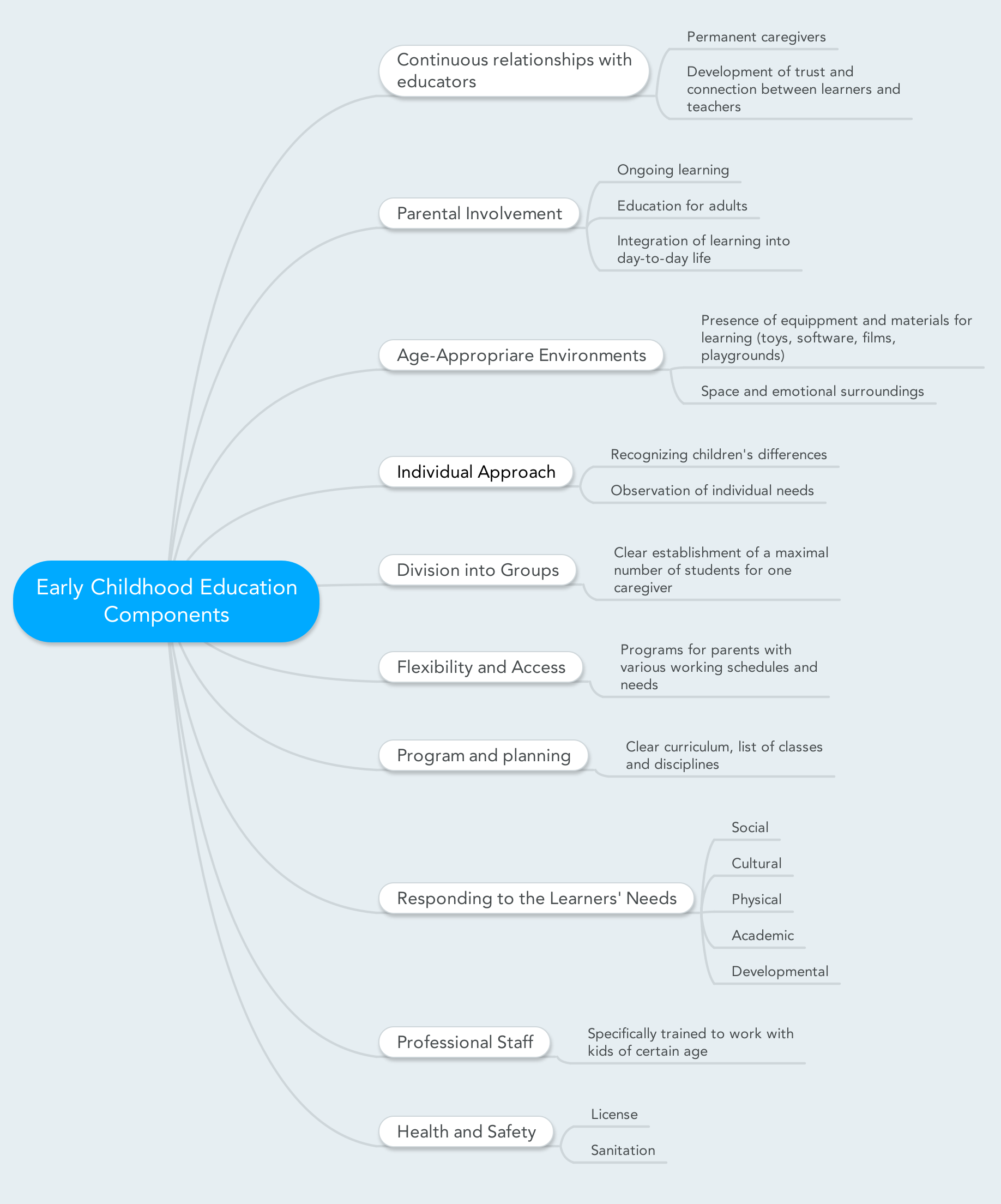What to Look for in a Quality Early Childhood Education Program

Health and Safety
Health and safety of the facilities involved in work with children is a crucial factor for their success. The facilities are to be appropriately licensed and to follow all the norms of hygiene and sanitation practices in order to avoid the spread of diseases and infections and to maintain the children’s health and wellbeing (10 Components of High Quality Child Care for Infants and Toddlers, 2013).
Professional Staff
The educators, supervisors and caregivers involved into work with children are to be properly trained and master the practice of teaching including all of its techniques and methods, which can only be achieved through the combination of theory and practice of teaching (Lino, 2014).
Responding to Learners’ Needs
Young learners have a number of needs that have to be assessed and addressed. The program is to be built in a way to cover all of the needs systematically for the creation of harmonious development and active learning experiences for the children socially, emotionally, physically, culturally, and academically.
Program and Planning
The curriculum is to include all the necessary disciplines such as language and literacy, science, art, social studies, physical education (Morrison, 2012). The program should be oriented at work with diverse learners. Basic skills such as problem solving, communication, logical thinking should be developed.
Flexibility and Access
Educational programs of the facilities taking care of young children are to include flexible schedules for the parents of various kinds in order to provide constant care for the young learners during academic year and summer and winter breaks, it also is to include an option of overtime care for the children whose parents work long shifts.
Division into Groups
It is important to establish maximal sizes of groups. For example, one educator should e in charge of not more than five children. This division is individual for the facilities, yet it is vital for the creation of close relationships between educator and children and for providing the best care and individual approach for the learners (10 Components of High Quality Child Care for Infants and Toddlers, 2013).
Individual Approach
Individual approach maximizes the level of trust between the learners and their educators and encourages the children to develop through open communication, asking questions, sharing feelings, describing experiences (The 10 NAEYC Program Standards, n. d.).
Age-Appropriate Environments
The facilities working with young learners are to be appropriately equipped in order to provide a wide range of educational and developmental activities. The environments should be inspiring, facilitating active learning and the engagement of all the senses, but also safe and harmless for the children.
Parental Involvement
The involvement of the children’s families into the educational process provides an ongoing learning experience which does not end outside of the classroom. This is required in order to maximize the efficiency of care and improve the development of young learners preparing them for the adult life in the best way possible.
Continuous Relationships with Educators
It is vital to remember that early childhood education is to be oriented not only at academic achievement of the learners but also to provide care, at this stage care and education should be delivered in a balanced composition (Sims, 2014). This way, the educators should not be changed often, as stable and lasting relationships with caregivers help the learners feel safe and increase the level of mutual understanding between the teachers and learners.
Reference List
10 Components of High Quality Child Care for Infants and Toddlers. (2013). Child Development Council. Web.
Lino, D. (2014). Early childhood teacher education: How to Enhance Professional Development. Journal Plus Education/Educatia Plus, 11(2), 200-209
Morrison, G. S. (2012). Early childhood education today (12th ed.). Upper Saddle River, NJ: Pearson Education.
Sims, M. (2014). Is the care-education dichotomy behind us? Should it be? Australasian Journal of Early Childhood, 39(4), 4-11.
The 10 NAEYC Program Standards. (n. d.). NAEYC. Web.
